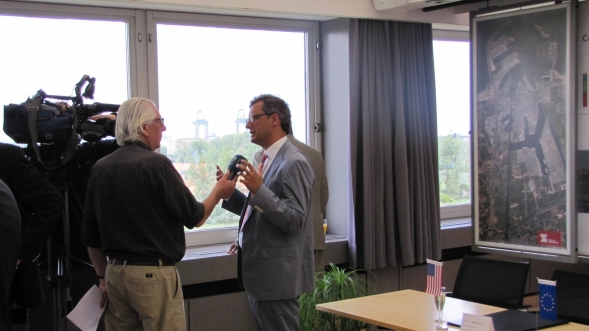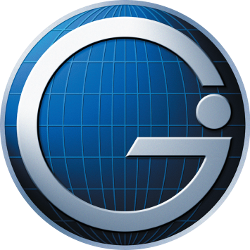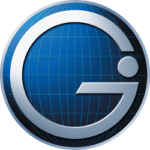ANTWERP MARCH 2011
JOACHIM COENS APPOINTED CHAIRMAN OF GIL
With globalisation and the evolution of shipping as vessels of bigger dimensions arrive on the scene, port authorities need to do more than just be landlords focusing on building infrastructure, providing cranes and improving market access to be more competitive, said Joachim Coens, chairman and managing director of the Port of Zeebrugge in Belgium. Speaking to media on the occasion of his appointment as Chairman of the European chapter of the Global Institute of Logistics, Coens said:

AS CHAIRMAN OF THE GLOBAL INSTITUTE OF LOGISTICS
click on picture to hear interview
“Ports need to have a dialogue. Not only with shipping lines and other ports but also with manufacturers, exporters and importers, stevedores, and logistics and transport companies to help them make the flow of goods more cost-effective and efficient.” “They must sit in the midst of the logistics stream of goods moving across the hinterland and going from Europe to South China and the rest of Asia and vice-versa,” he added.
Port Authorities don’t have to go it alone, Coens said. They can pool their expertise and resources with transport companies, terminal operators and stevedores and share the costs and profits for developing a more efficient service. Coens called on ports and institutions like the Global Institute of Logistics to connect with ports in China, Africa and the US and see what are the moods. “It is not the same everywhere. Some have good river connections, some rail connections. Everybody must know what’s important for them. So the ports need to change and see how they can help each other,” he said. Coens said ports needed to be actively involved in the cargo scene, talking to shipping lines, hinterland connections, customers, veterinary control authorities, Customs as well as government officials to ease trade barriers.
In this context, the Port of Zeebrugge has set up a company called PortConnect whose job is to see where the cargo is coming from and where it is getting to, and see how it can play a role in the middle. PortConnect includes APM Terminals Zeebrugge, PSA Zeebrugge, Inter Ferry Boats and Naviland Cargo. The last two provide the rail service.
“We can suggest to our customers the best way to send their goods. We have people in Europe who export but probably not in the most efficient way,” said Coens. “For example, we detected that deep freeze products went to Italy by truck one by one, customer by customer. We suggested to our customers to consolidate all those shipments at the port and put it on the train, which would be more cost-efficient. Now most of that cargo goes by rail three times a week.”
“So it is not only knowing where the market is but the best way to reach that market, which many customers are not aware of,” he added.
Traditionally, hinterland logistics has been out of the Port of Zeebrugge’s hands. It is the state-owned railways or the private inland navigation barges or the truck companies that handle this. Whenever the cargo needs to be picked up they do it and the port authorities do not play a role. That’s not their business. But that has changed because the operation is becoming so complex and with the huge volumes involved, the ports have had to get more involved.
Another initiative of PortConnect was the setting up of a regular container rail shuttle between the Port of Zeebrugge and the city of Dourges in Northern France. PortConnect found that the best way to operate in the French market all the way to Italy and Spain was the rail connection from the north of France. “So we went to the rail operators, put them together with our terminal operators and shipping lines and together we drew up a plan,” said Coens.

